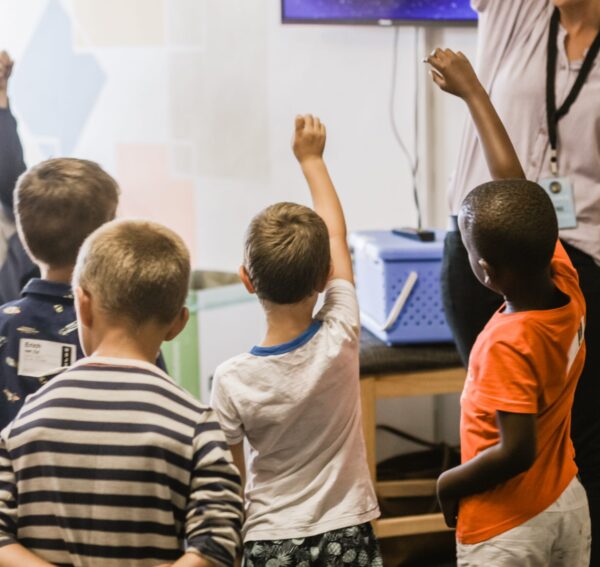An educators view on guiding pre-service ECTs through the new ‘normal’
opinion
The views expressed by contributors are their own and not the view of The Sector.

‘Ferris Bueller’s Day Off’ is a classic film from 1985, about a high school kid who decides to take a day off school. It’s always been one of my favourites. At this point in time, as the world finds itself in the most extraordinary of circumstances, many of us have been called on to develop new and different ways of working and staying connected. As I have grappled with some of these particular challenges, one question Ferris asks at the beginning of the film rings through my mind – “How could I possibly be expected to handle school on a day like this?”.
I spend part of my working week as a Lecturer teaching Pre -Service Early Childhood Teachers (ECTs). One who lectures in the education field is always battling dual complexities – not only are you teaching the subject content, you’re also modeling what it is to be a teacher. In this space, teaching becomes both an adjective and a verb. With this in mind, I’ve always delivered content face to face. Not only does this best suit my particular style, it also gives me an opportunity to model the development of strong relationships with students, and to get a real time gauge of my student’s level of engagement with the subject.
In the past two weeks, Lecturers just like me, all over the country, have had to move quickly to an online mode of delivery. For some, this has been a multilayered challenge – not only have they had to make subject content available to students using a variety of multimodal approaches, but also get their own digital literacy skills up to speed so that students feel that everything will ‘work’ and that their educator is still “there for them”.
Keeping in mind the adage “failing to prepare is preparing to fail” I quickly set about creating systems which would support me to navigate my new reality.
The very first thing I did when I realised that I would no longer teach in the usual way was to set up a class Spotify account called ‘The Lonely Lecturer – Music to work to’. I asked each of the students to send me songs they could not live without and I built our own playlist.
This invitation was taken up with much enthusiasm and while it was a great way to bring some positivity to the space, its biggest gift was the opportunity to give each of us a glimpse into the other’s lives. Nothing says more about you than the music you can’t live without.
This Spotify account has become a tie that binds us and a pedagogical strategy, as I focus on one song at the start of each Zoom tutorial to ease us into the space each week. (For those interested, this week’s song was ‘Unguarded Moment’ by The Church).
I also asked students to set up professional learning groups (PLG) so that they could take some responsibility for driving content for tutorial sessions, developing weekly online provocations as well as being a smaller forum of support to each other.
I also, perhaps most importantly, spent many hours learning new technologies, practicing these new skills out and developing new ways for students to learn and for us all to remain connected.
What I have come to realise over the past two weeks is that not being in the same room together does not have to mean that interaction and engagement has to be compromised.
The online portal that staff and students use to teach and interact supports many different options for online delivery. The challenge has been to further think about how to actually use this portal to its full advantage and augment this with new technology such as Zoom, and other interface applications. This has taken time and patience but in the hands of capable Lecturers it can all work.
Advice for others
Whether your learning supports children, adults, or anyone in between, the fundamental element of connection and support remains the same. The acronym CPR has supported me to focus on three core elements over the past fortnight
- Communication. Clear and frequent communication around expectations, strategies and support. If people know what they have to do, know where to go for support and upskilling, it helps set a clearer course and maintains focus on our core business which is teaching.
- People. ‘Lending’ their knowledge to others. Over the past week I have witnessed my colleagues sharing skills, challenges, successes and most importantly time. We really are all in this together.
- Resources. Being able to teach remotely requires a massive investment of IT resources as well as human resources. Being able to access quickly, advice and technical help is critical. To IT helpdesk staff – thank you!
While we are just at the beginning of this virtual way of working, I can see that while there will be challenges there have also been some unexpected surprises and benefits. An 8.30 am Zoom tutorial session now might bring toast, cereal, coffee, dressing gowns and parents into view. Instead of ‘blanking’ out the spaces that students generally inhabit I get a little glimpse of their space and they of mine.
I have also developed a deeper understanding and appreciation of the skills and talents that exist among my colleagues, some of whom walk the very same corridor space as me. It would be easy to think that online meant we retreated more, but in fact, I think in many ways we have become more present for each other.
As we move into this new way of teaching and the very present issues of developing lectures, taking tutorials and marking assignments, it is also important that we take a moment to take a breath or two and slow down or as Ferris Bueller says:
“Life moves pretty fast. If you don’t stop and look around once in a while, you could miss it.” (Ferris Bueller)
Student reflection – Edward Simpson, 4th Year Pre-Service teacher
I’ve had to really pay attention to setting myself up for success. Although learning from home sounds appealing to some, I know that if I am lying in bed on my laptop, I won’t be able to pay attention as well as I might in a more structured space.
Limiting distractions is also important, so phones, TVs and other things which compete for my attention should be out of reach. When I’m focused, I’m in a better position to contribute to the class.
I think with all aspects of technology there are always going to be unintended benefits. I believe all of the features within Zoom are intended; however, it is how some individuals benefit from the program that is unintended. For example, I think for students who normally are too shy in face to face classes have the opportunity to contribute through Zoom as there is less pressure on them. This is fantastic as it provides people more confidence.
I was a bit concerned how I would go with online platforms. However, after my first session with Karen I knew it would be just like face to face. I think this comes down to having rapport with lecturers and I guess that connection. Not all Zoom sessions will be engaging, however because of Karen’s upbeat and excited nature, all sessions engage students.
I really enjoyed the first Zoom session. Normally in face-to-face classes, I sit with the same individuals, however during the session it was nice to talk with others within my cohort. This was seen during the breakout rooms where we had a chance to discuss readings and contemporary issues. I think allowing time to discuss readings is also very insightful as it allowed us a chance to consolidate our understanding with others.
Popular

Workforce
Quality
Research
When did it start to go wrong?
2025-12-18 08:00:46
by Fiona Alston

Quality
Practice
Research
Small ways to teach babies and toddlers body safety and consent in early learning
2025-12-15 08:00:40
by Fiona Alston

Quality
Research
Food safety in early learning centres: Protecting children through better practices
2025-12-15 07:45:24
by Contributed Content
















